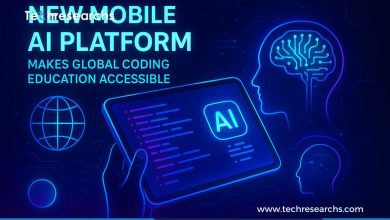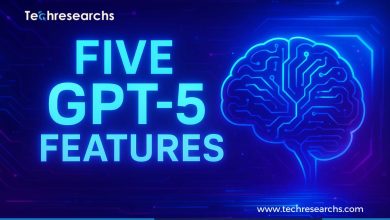Why Businesses Must Prioritize Web 3 for Future Growth

The world is moving toward a borderless future where everything is virtual, and we are all connected. The core of Web 3.0 is this.
Web 1.0 focused more on developing mobile internet technologies, as was already said. The emergence of websites and social media throughout the Web 2.0 era was its defining feature.
Web 3.0 is merely the next step of the Internet’s evolution as it becomes its own universe. The era of decentralized apps and blockchain technology is known as Web 3.0. At this point, practically every area of your life can be decentralized thanks to blockchain-based technologies.
According to Deloitte, Web 3.0 incorporates digital information, blurring the distinction between virtual and physical objects.
Web 3.0 will therefore have an impact on organizations by enhancing their user-centricity and responsiveness. Any issues with corporate governance that included user data will be completely rectified.
Principal Advantages of Web 3.0:
Ownership of Data:
Large technology companies have long controlled and used user-generated data. End users obtain full ownership of their data using Web 3.0, which is provided through the blockchain.
Data is transmitted over the internet using encryption. Users have the option to choose which data they share with businesses and advertising agencies in order to profit from it.
Data protection and anti-monopoly:
Web 3.0 includes a number of approaches for professionalism and data protection. It promotes decentralized operating systems that uphold users’ ownership of their data.
Decentralization and privacy will change things on the front lines. The monopoly of technical behemoths has been broken, giving people control over how their data is used. As a result, there will be fewer instances of data breaches in the future.
Simple Information Access:
One of the key advantages of Web 3.0 is the fact that data can be obtained from anywhere, thanks to the increasing use of smartphones and cloud apps.
The objective is to give as many users as possible access to data globally. By allowing devices to gather the most useful data possible and eventually aiding in the expansion of this technology.
Continuous Service:
There is a significant reduction in account suspensions and distributed service rejections. Since there is no single predetermined breaking point, there are few guarantees. The data is stored across multiple nodes for redundancy, and multiple backups prevent the server from being taken over or failing.
Unauthorized Blockchain:
Web 3.0 does not require centralized authority. Anyone can access and use the network by creating an address. This eliminates the possibility of blocking individuals due to their gender, level of income, sexual orientation, location, or other social characteristics. Additionally, it makes it possible for fast and economical cross-border movement of physical and digital goods.
What distinguishes Web 3.0:
Learning, reasoning, and self-correction are the three cognitive abilities that artificial intelligence focuses on and are all partially present in the human brain. We characterize these in terms of AI:
Learning– is the process of both acquiring knowledge and applying it to real-world situations.
Reasoning– The process of drawing precise or approximative conclusions from the given rules is known as reasoning.
Self-Correction – The practice of continuously improving AI algorithms to make sure they deliver the most accurate results.
It means that blockchain technology alone will not be sufficient and that many technologies must be pushed to the fore. The core components of Web 3.0 for the Semantic Web and decentralized Web are modern technologies that are still in development.
Artificial intelligence (AI)
AI systems, in a nutshell, bring together vast volumes of data and smart, iterative processing methods. This combination enables AI to learn from patterns and traits in the assessed data.
After each cycle of data processing, an artificial intelligence system evaluates its performance and uses the results to develop new knowledge.
Semantic Web:
The Semantic Web, the next stage in the development of the Internet, enhances the usability and accessibility of websites.
By allowing users to search for information using particular definitions rather than merely keywords or page numbers, the Semantic Web helps users be more precise and efficient when looking for information.
Where should businesses start?
In the coming years, as the Spatial Web’s capacity to provide intuitive encounters with highly contextual and personalized information increases, business strategies and consumer behavior will undergo a significant change.
Similar to how Web 2.0 capabilities have impacted new mobile habits and work methods, the majority of firms won’t build their own Spatial Web; instead, they’ll contribute to it as it develops into the next major computing age.
Many businesses might think that this transformation will take place too soon to be important. To prepare for, benefit from, and shape this new era as it emerges, important steps can be taken right away.
Depending on the industrial category, the ideal entry points may vary, The majority will benefit from the following actions:
It’s a wonderful idea to construct with the best intentions. Although they don’t necessarily develop with that end-state in mind, several large organizations have started experimenting with the technologies that power the Spatial Web.
As a result, they can miss out on significant efficiencies. There is plenty to investigate about the integration and simplification of 3D assets, such as bringing 3D product models from product conceptualization through factory technician training, all the way to marketing and customer support, if you run a manufacturing organization.
Organizing your company: The Internet of Things (IoT) and location-based sensor testing might be the start of a business.
By increasing a company’s operational awareness, using sensor data can produce better outcomes. Learning to manage sensor data, whether it comes from truck trackers, infusion pump sensors in hospitals, or video feeds in retail stores, helps organizations get ready for the volume of data they will face and start making money from whatever insights they may provide. For consumers of the spatial web, sensors will become more crucial inputs.
looking closely at location-based sensors and the Internet of Things (IoT). By increasing a company’s operational awareness, using sensor data can produce better outcomes.
Learning to manage sensor data, whether it comes from truck trackers, infusion pump sensors in hospitals, or video feeds in retail stores, helps organizations get ready for the volume of data they will face and start making money from whatever insights they may provide.
For consumers of the spatial web, sensors will become more crucial inputs.
insist on moral, comprehensible standards. A fusion of recent technologies led to the creation of the Spatial Web.
Standards are already being developed by both established and emerging organizations to promote application interoperability.
These organizations and the ensuing standard-setting campaigns may benefit from the corporate community’s assistance. The time to acquire that perspective is now, according to Jan-Erik Vinje of the Open AR Cloud effort.
and also talk about how we think about the future and what values should be the North Star while building this technology if we want it to serve as many people as possible while also being an excellent engine of economic growth, technological advancement, and societal development.
Note at end: Web 3.0 gives companies the ability to bypass middlemen and connect computers directly, speeding processes.
As a result, the company becomes more productive because it is simpler for employees, partners, and customers to communicate and work together.
If you participate with this idea in mind from the beginning, your organization may be ideally suited to tell the narrative rather than having it given to you.
Note at end: Web 3.0 gives companies the ability to bypass middlemen and connect computers directly, speeding processes.
As a result, the company becomes more productive because it is simpler for employees, partners, and customers to communicate and work together.
If you participate with this idea in mind from the beginning, your organization may be ideally suited to tell the narrative rather than having it given to you.



